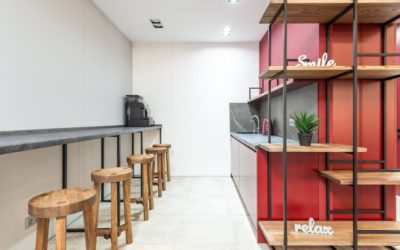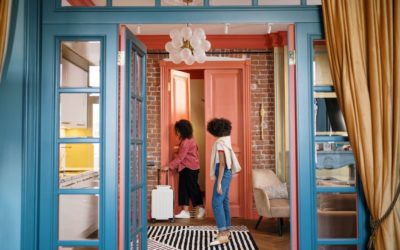Creating a Safe Haven: Designing a Child-Friendly Home
Introduction:
Creating a safe and child-friendly home environment is of utmost importance for every parent. A well-designed home can provide a haven where children can thrive, learn, and explore. In this article, we will delve into the concept of child-friendly home design and provide practical tips and ideas to help you create a space that promotes safety, functionality, and creativity.
Understanding the Needs of Children
Age-appropriate Design
When designing a child-friendly home, it’s crucial to consider the age of your child. Different age groups have varying needs and abilities, and tailoring your design to their specific requirements is essential. For infants and toddlers, focus on creating a safe and nurturing environment with soft surfaces, rounded furniture edges, and age-appropriate toys. As children grow older, incorporate elements such as study areas, play zones, and storage solutions that align with their developmental milestones.
Safety Considerations
Prioritizing safety is paramount in a child-friendly home. Identify and address potential hazards to ensure a safe living space. Common safety considerations include securing cabinets and drawers, installing outlet covers, and using safety gates to prevent access to stairs and hazardous areas. It’s also essential to anchor heavy furniture and secure cords and blinds to prevent accidents. Regularly inspect the home for potential risks and make necessary adjustments to maintain a safe environment.
Designing Functional and Practical Spaces
Play Areas
Having dedicated play areas within the home is essential for children’s development. Designate a specific room or corner where children can engage in imaginative play, physical activities, and creative pursuits. Consider incorporating storage solutions such as bins, shelves, or toy chests to keep toys organized and easily accessible. By creating a designated play area, you can encourage a sense of independence and provide a space where children can explore and learn.
Bedrooms
A child-friendly bedroom is a sanctuary where children can relax, sleep, and feel secure. Choose furniture and bedding that are age-appropriate, comfortable, and safe. Opt for cribs, beds, and mattresses that meet safety standards and have protective railings. Use soothing colors and decor to create a calming atmosphere conducive to sleep. Ensure that window coverings are cordless or have cord safety devices to prevent accidents.
Study and Learning Spaces
A designated study area is crucial for children’s learning and concentration. Set up a desk and chair that are ergonomically designed to support proper posture and comfort. Organize study materials such as books, stationery, and supplies in a way that promotes easy access and organization. Consider incorporating a bulletin board or whiteboard for displaying important information and encouraging creativity. Creating a conducive learning environment at home fosters a love for learning and academic success.
Creating a Safe and Stimulating Outdoor Space
Outdoor Play Areas
Outdoor play is essential for children’s physical and mental well-being. Design a safe and engaging outdoor play area where children can explore, play, and connect with nature. Install age-appropriate playground equipment such as swings, slides, and climbing structures. Consider incorporating natural elements like sandboxes, water play areas, or gardening spaces to provide sensory experiences. Ensure that the outdoor space is securely fenced and free from potential hazards.
Garden and Landscaping
Involving children in gardening activities not only promotes a connection with nature but also teaches them valuable life skills. Design a child-friendly garden by selecting plants that are non-toxic and safe for children. Create designated areas where children can plant and tend to their own flowers or vegetables. Ensure that the garden has secure boundaries and is free from poisonous plants or harmful substances. A well-designed outdoor space can provide endless opportunities for exploration, learning, and play.
Incorporating Child-Friendly Design Elements
Flooring and Surfaces
Choose flooring materials that are durable, non-slip, and easy to clean. Opt for carpeting with stain-resistant properties or hardwood flooring with a protective finish. Avoid materials that may pose a tripping or slipping hazard, such as loose rugs or slippery tiles. Consider using soft mats or rugs in play areas to provide a cushioned surface for children’s activities.
Furniture and Accessories
Select furniture and accessories that prioritize safety and functionality. Choose pieces with rounded edges to prevent injuries and opt for non-toxic materials. Consider investing in child-sized furniture that allows children to comfortably use and access their belongings. Incorporate age-appropriate decor such as wall decals, artwork, or educational posters to create a stimulating and inspiring environment.
Lighting and Acoustics
Proper lighting and acoustics play a significant role in creating a comfortable and conducive environment for children. Ensure that rooms have sufficient natural and artificial lighting to promote visibility and reduce eye strain. Use adjustable blinds or curtains to control sunlight and create a soothing ambiance. Manage noise levels by incorporating sound-absorbing materials or using rugs and curtains to dampen sound.
Engaging Children in the Design Process
Involving Children in Decision-Making
Engaging children in the design process can foster a sense of ownership and empowerment. Allow them to participate in decision-making by involving them in color choices, room layout, or selecting their own furniture. Encouraging their input and considering their preferences helps create a space that reflects their individuality and nurtures their creativity.
Personalizing Spaces
Allowing children to personalize their own spaces is an excellent way to boost their self-expression and creativity. Encourage them to display their artwork, crafts, or personal belongings in their bedrooms or play areas. This not only adds a personal touch to the space but also fosters a sense of pride and ownership.
Conclusion:
Designing a child-friendly home goes beyond aesthetics; it encompasses creating a safe, functional, and stimulating environment where children can thrive. By understanding their needs, incorporating age-appropriate design elements, and involving them in the process, you can create a safe haven that nurtures their growth and development. Implement the tips and ideas discussed in this article to transform your home into a place where your children can flourish.











